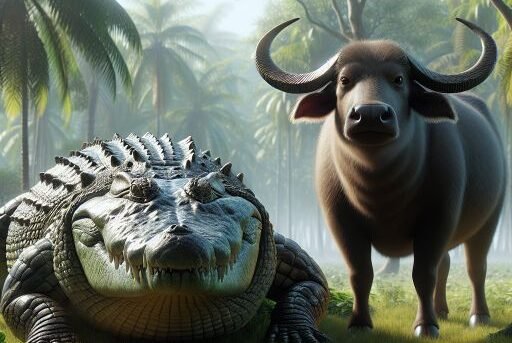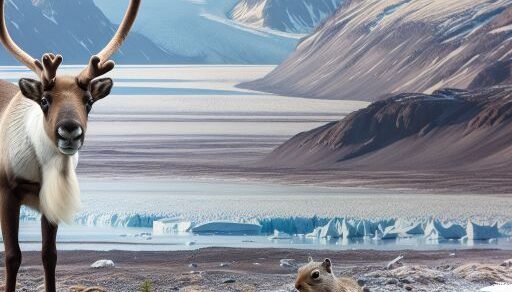Location and Habitat
Crocodiles are predominantly found in tropical regions of Africa, Asia, the Americas, and Australia. They inhabit a variety of freshwater environments such as rivers, lakes, wetlands, and sometimes in brackish water. The habitat of crocodiles is crucial as it provides them with the necessary resources such as food and nesting sites, and the water bodies offer them concealment for hunting.
Water buffaloes, on the other hand, are native to the Indian subcontinent and Southeast Asia. They thrive in wet, marshy areas where they can wallow in the mud, which is essential for regulating their body temperature and protecting their skin from parasites. Water buffaloes are also commonly found grazing in submerged pastures close to water bodies, and they have been extensively domesticated for agricultural purposes in many parts of the world.
Crocodile vs. Water Buffalo Comparison
| Animal | Size and Weight | Ability to Finish Opponent | Weaponry |
|---|---|---|---|
| Crocodile | Up to 20 feet long and 2,200 lbs | High – powerful bite with ability to drown opponents | Strong jaws, sharp teeth, powerful tail |
| Water Buffalo | Up to 9 feet long and 2,650 lbs | Moderate – strong and aggressive when threatened | Large horns, massive body size |
“`
Hunting and Skills
Crocodiles are formidable predators that primarily hunt fish, birds, and mammals, including water buffalo when the opportunity arises. They utilize a method of attack known as the “death roll,” where they grip their prey with powerful jaws and roll in the water to overpower and dismember it. Crocodiles are also known for their ability to launch sudden ambushes from the water, using their explosive speed and stealth to catch prey off guard.
Water buffaloes, on the other hand, are large herbivores that primarily feed on grasses and aquatic plants. When threatened, they defend themselves using their size and strength, along with their large, curved horns. Water buffaloes are social animals and often rely on the safety of their herd to deter predators. They are capable of aggressive charges to protect themselves or their calves from threats like crocodiles.
Crocodile vs. Water Buffalo Who Would Win?
The crocodile ambushes the water buffalo near the water’s edge. The crocodile uses its powerful jaws to try and clamp down on the buffalo. The water buffalo resists fiercely, using its strength and horns to fight back. The struggle continues with both animals showing significant power. If the fight remains in shallow water, the crocodile has an advantage. On land, the buffalo’s mobility and strength give it the upper hand. The outcome largely depends on the terrain.
Winner: Water Buffalo, with a 60% chance of winning on land, Crocodile with a 70% chance of winning in deep water.




